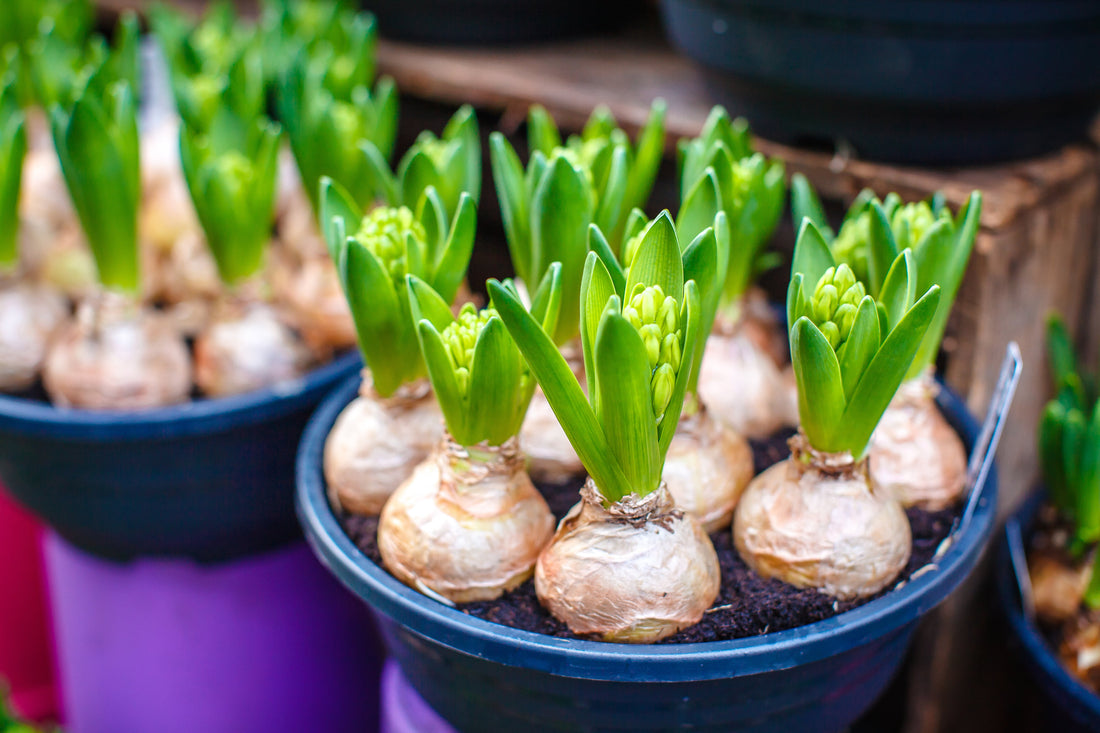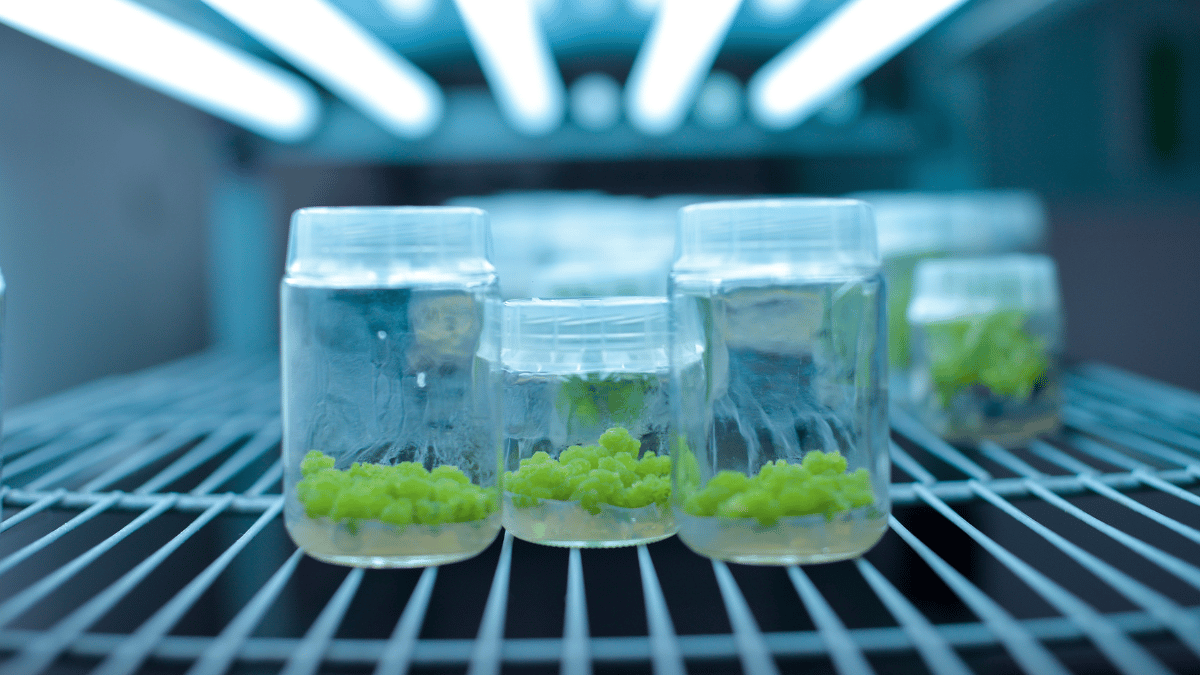
The 6 Steps of Propagation for Flower Bulbs


What Are Flower Bulbs and Why Do They Work Well With Tissue Culture?
Bulbs are storage organs and resting stages of certain plants that develop through modified stems. They consist of two types: (1) Onion type: Thin covering like paper that protects fleshy leaves, (2) Scaly bulb: The thin covering protecting the fleshy leaves are absent in this type of bulb. However, they have a series of angular scales. Its examples include Narcissus, Tulips, and Hyacinth.
The first report on tissue culture propagation of flower bulbs, published by Robbin in 1957, made it popular among researchers. This event has caught the eye of several culturists to develop the technique to grow several other species of flower bulbs in tissue culture. The flower bulbs that are mostly cultured using the in vitro techniques belong to the family of the Liliaceae, Iridaceae, and Amaryllidaceae.
You must be thinking, why does this technique hold such immense importance? It’s because it helps to increase the multiplication rate of flower bulbs, and reduces the time of complete development. For example, it takes 16 years to yield Tulips in natural conditions. However, In tissue culture, one tulip bulb can yield 1000 descendants in only 1.6 years.
In this article we will walk through the 6 steps of micropropagation of flower bulbs and highlight the different factors that may affect the process.
The 6 Step Tissue Culture Process
- Mother Plant Preparation
- Initiation step: Formation of shoots or bulblets by using suitable explants
- Propagation of shoots or bulblets
- Bulb growth: Suitable conditions are provided to induce bulb formation
- Dormancy breaking
- Planting or transfer to the greenhouse
The protocols are designed based on the species of the plant that need to be cultured.
Shop our Plant Preservative Products Today!
Each Step Explained
1. Mother Plant Preparation: It is required to use healthy and undamaged bulbs to avoid any contamination. Treat the bulbs with hot water for 1 hour at 54 ℃ in narcissus and 1 hour at 43 ℃ in Lily. Moreover, the regeneration ability of the bulbs is determined by its storage conditions.
2. Initiation (Explants that can be used):
- excised from scales or flower stems that develop into bulblets or adventitious shoots under in vitro conditions.
- Apical and axillary buds: These are preferable explants because they show better output in terms of virus elimination and have improved propagation rates than adventitious buds. For example: in Iris.
3. Propagation: In this step, both shoots and bulblets show effective responses in adventitious and axillary propagation. However, higher propagation rates are observed in plants where shoots were used. For example: In Hyacinth 2-3 new bulblets regenerate/bulblet, whereas 10-40 new shoots regenerate/shoots.
4. Bulb Growth: It’s the final cycle of propagation and in this step, bulblet should be produced. Sometimes, the formation of bulbs is interrupted or abnormal bulbs can be observed when shoots are planted in soil. The suitable conditions to stimulate the bulb development and growth include high sucrose concentration, no or low growth regulators, darkness, charcoal, and moderate temperatures. The size of the bulb also decides the fate of the growing bulb. So, it’s preferable to use large bulblets for effective growth. For example, in Lily, large bulblets show better growth response than the smaller ones.
5. Dormancy breaking: To break bulb dormancy and induce optimum growth, treat bulbs at a suitable temperature that requires either several weeks at low temperatures (2-9 ℃) or 30 ℃ for 4 weeks in some species. The optimal temperature and duration for tissue culture-derived bulblets are the same in the case of tissue culture produced plants and conventionally produced ones. The dormancy level and leaf formation are also affected by conditions like temperature, sugar concentration, and duration of the culture cycle.
6. Planting: The steamed potting composts used to grow tissue culture plants are the same as for conventionally propagated bulbs. For one year, it’s preferable and essential to growing bulbs in an aphid-proof glasshouse or gauze house to avoid virus infection. The lower temperature of soil enhances the bulb growth when planted directly in it.
Other Tissue Culture Considerations
- Bulblets regeneration: The regeneration of bulbs do not require a rooting medium and acclimatization, however, breakdown of dormancy is an essential requirement.
- The tissue culture protocols of most of the flower bulbs involve the adventitious regeneration of shoot meristem.
- Flower bulbs are susceptible to infection by a variety of viruses, which cause economic losses. So, be precautious, focused, and alert during the whole process to keep an eye on and eliminate virus infection.
- If you are cultivating flower bulbs for commercial purposes, ensure that phytosanitary controls for imported and exported commodities are appropriate, and collect information about a country’s phytosanitary status to implement disease control measures.
References
- Langens-Gerrits, M. M., & De Klerk, G.-J. M. (n.d.). Micropropagation of Flower Bulbs: Lily and Narcissus. Plant Cell Culture Protocols, 141–148. doi:10.1385/1-59259-583-9:141
- Van Aartrijk, J., & Van Der Linde, P. C. G. (1986). In vitro Propagation of Flower-Bulb Crops. Current Plant Science and Biotechnology in Agriculture, 317–331. doi:10.1007/978-94-009-4444-2_27
- Maślanka, M., & Bach, A. (2014). Induction of bulb organogenesis in in vitro cultures of tarda tulip (Tulipa tarda Stapf.) from seed-derived explants. In Vitro Cellular & Developmental Biology - Plant, 50(6), 712–721. doi:10.1007/s11627-014-9641-1
- https://www.britannica.com/science/bulb
Blog Categories
View by Level
Popular Blogs

Callus Culture: Definition and Applications
Introduction Tissue culture is not just one technique! Yes, you heard right! As you know, tissue culture is an advanced...
Read More
6 Plant Tissue Culture Books to Keep Learning
Introduction Most of us are fans of books when it comes to learning a topic in detail and in a...
Read MoreSubscribe to Our Newsletter








Join the conversation
Your email address will not be published. Required fields are marked